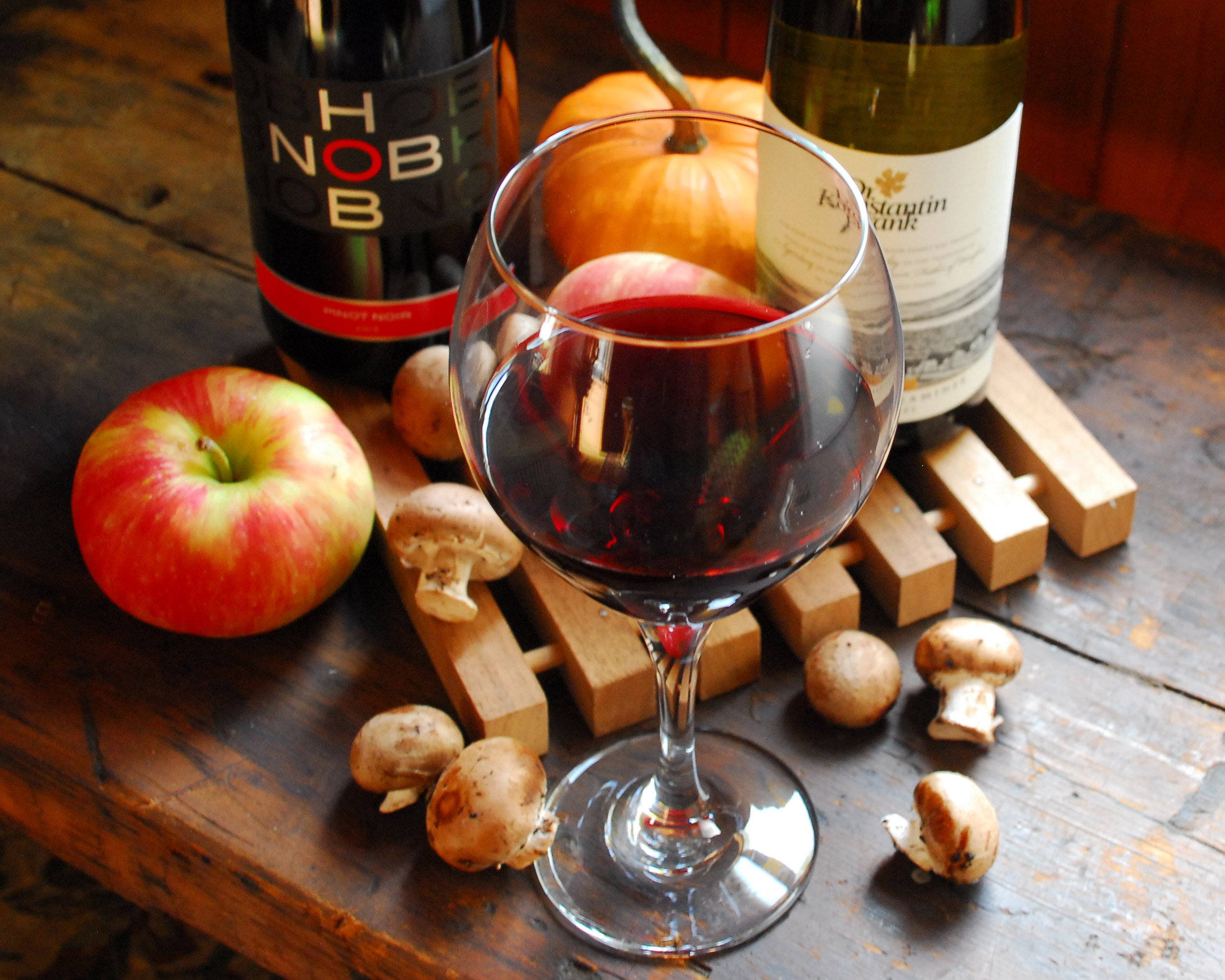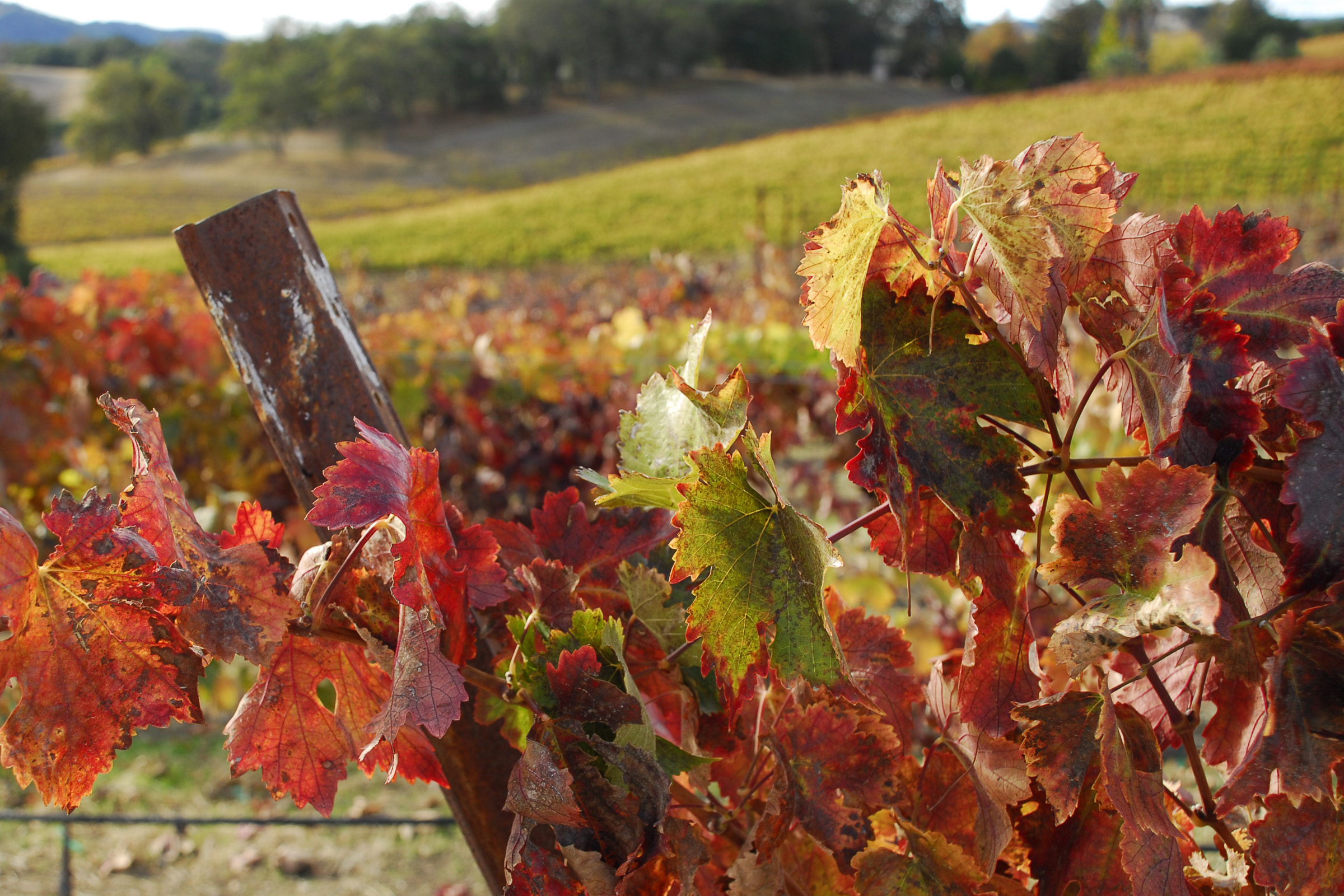Summer Reds to Help You Chill
/Thoughts of quenching summer heat are usually followed by thoughts of Pinot Grigio, Chablis, or a light sparkling wine. Our wine group gathered to taste four reds perfect for picnics: Pinot Noir, Garnacha, Barbera d’ Asti, and Sangria.
Pinot Noir has different styles ranging from light-bodied to rich and earthy. One of my favorites in Oregon was a small production Pinot that poured almost like a rose out of the bottle, then became darker and more complex as it sat. Pinot Noir is an ancient grape, with known references dating to the first century. It’s a tricky grape to grow and likes cooler temperatures, such as the Burgundy region of France and the Willamette Valley in Oregon. Many California Pinots tend to be fruitier than their Burgundy counterparts because of the warmer growing temperatures.
For summer pairings, salmon is a classic with Pinot Noir and is especially good when the wine has some oak. Cherries and strawberries are also good with Pinot, and I paired our tasting bottle, Estancia Stonewall Vineyard (California) with fresh cherries and goat cheese with honey. Tasters found this wine smooth and “plummy” with a little chamomile on the nose and just a bit of oak.
Garnacha, or Grenache, also has a range of styles that could span the seasons. It’s one of the most widely grown grapes in the world but prefers dry, hot climates like Spain, southern France, and parts of Australia and California. Its most notable flavors are raspberries and strawberries, but with finesse, the wine can develop more complexity, richer layers, and darker flavors.
Our tasting group’s Garnacha, Honoro Vera, was a lighter Spanish red with black pepper on the nose and flavors of plum and cherry. Good with charcuterie and barbequed pork, I served this Garnacha with jamon (a cured Spanish ham, like prosciutto) and Manchego cheese.
Barbera d’ Asti is a drier medium-bodied red, which, per regulation, must have at least 12.5 percent alcohol. The Piemonte region of Italy is believed to be where the grape originated, probably around 1200, and the Barbera grape is grown predominantly in Italy still, though other countries have been adding it to their production. California has some nice Barbera wines.
The Araldica Albera Barbera d’ Asti that we tasted had a toast aroma and smooth, plum and blackberry flavors with some spice and a dry (“like vermouth”) finish. Tasters did prefer this wine with the salt and pepper cashews and the salmon dip. This is another good wine for charcuterie and cheeses and for pizza and pasta with red sauce.
A favorite summer refresher, Sangria is a blend of wine (usually red,) fruit juice, liqueur, and fresh fruits. It’s served cold from a pitcher or punch bowl and is light and easy to drink. Depending on the type of wine used, it can be dry or sweet, but can always be blended to taste. Sangria’s origins are in Spain around 300 years ago. It’s a great picnic wine drink that pairs well with casual foods like burgers, baked beans, and pasta salads.
For our tasting, I used Ed Hardy’s Red Sangria, a premixed red wine blend, and I added peach schnapps, blueberries and strawberries. I served it with watermelon slices, chocolate dipped shortbread cookies, and a Pinot Noir and fruit granita.
To keep the Sangria cold without watering it down, fill suitably sized plastic storage containers with one part water and two parts wine, add fruit and freeze completely. Place the blocks in the pitcher or punch bowl when mixing up the Sangria.
So red wine lovers, take heart and save your Syrah for cozy fall days. There are some lighter-bodied reds that refresh and fit right in with summer fare.
Article and all photos by Glynis Valenti
























